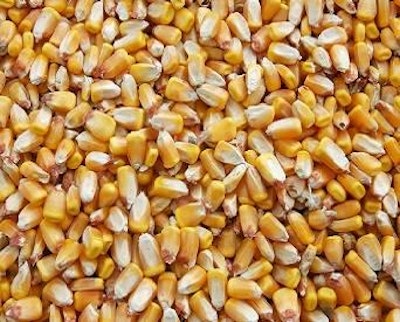
Ethanol is no longer in a growth phase. Sure, exports offer strong potential for profitability going forward, but we don’t see new plants being built. We also believe there are too many politics involved for greater use of corn to become realistic, or at least that would matter for the 2014 crop. And, we can’t determine if the ethanol producers even want E15 as it might trigger new plants, increased production and reduced market share for existing plants.
Developments in the DDGS market
In the meantime, there is a development worth watching that is slightly more negative than positive for corn prices. As the ethanol industry starts to make ethanol from this corn crop, dried distillers grains with solubles (DDGS) supplies might weigh on the corn market because the trade dilemma with China was never resolved last summer.
In the U.S., in 2013 and 2014 there has been less DDGS consumed by all livestock after the drought of 2012 and $8 corn, because corn is trending lower and is cheaper. We anticipate this trend to continue in 2015 as the high-quality crop being harvested should make better feed than the inclusion of DDGS. Some livestock operations that are regionally close to an ethanol plant and therefore have transportation advantages will still use DDGS.
We expect domestic livestock to shift to a more traditional feed ration: More corn, soybean meal and less DDGS. If we are correct, then a greater need for DDGS to be exported opens up, and history shows us that China can account for 50 percent of DDGS exports.
DDGS exports are a delicate matter when applying the overall balance of fundamental factors applied to the price of corn. In other words, farmers and ethanol producers really need this issue to be resolved so we can ship/export DDGS to China. DDGS is not exactly a perishable commodity, but it is a commodity that requires constant movement of product. The worst case scenario would be a backup of DDGS with nowhere to go. Mexico will most likely have the opportunity to step up its use of this feed commodity, but for a price-neutral balance to occur, we need China to remain a stable and consistent DDGS buyer.
Backing up a supply of any product or commodity is never a good thing, and the readers of nearly all of the WATT publications have likely experienced that in their careers.
Tim Brusnahan joined Brock Associates in 1985 and provides commodity price forecasting, research analysis, hedging and marketing strategies for crop producers, dairy and livestock producers and procurement/risk management strategies for feed manufactures, corn processors, and other end users. Contact Brusnahan at 414.540.2607 and [email protected] .
The views and opinions expressed are not a solicitation of trading futures and options contracts. There is risk of losses as well as profits when trading futures and options, careful consideration to all risk aspects of commodity/derivative trading should be considered before trading, and past performance is no indication of future results.
.jpg?auto=format%2Ccompress&crop=faces&fit=crop&h=48&q=70&w=48)
















